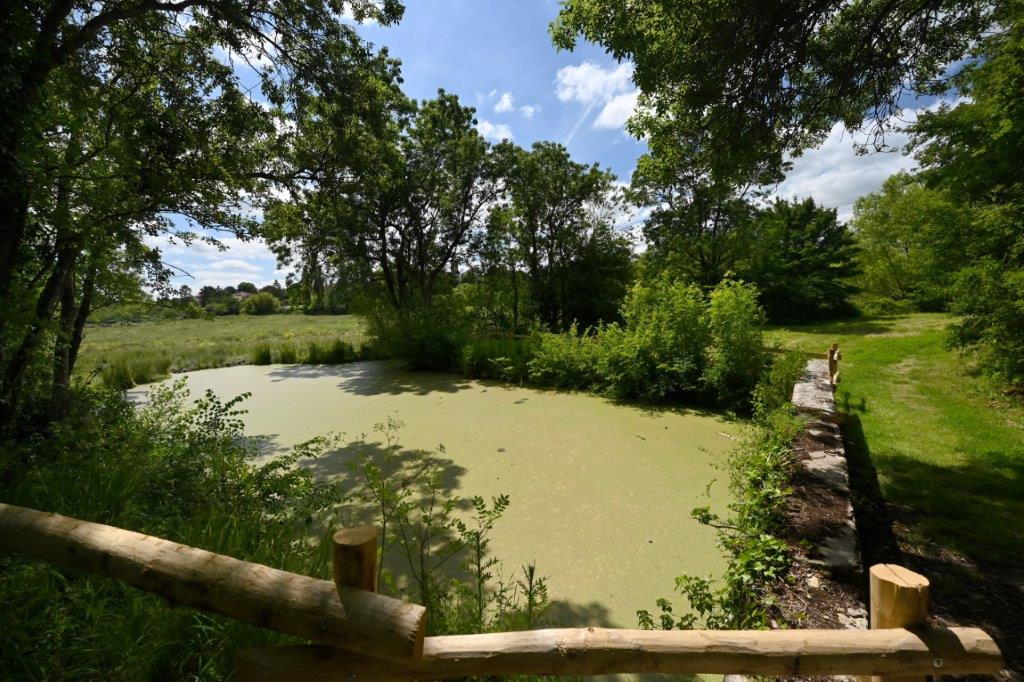L’ILOT DE CHAILLEZAIS
Description
A small path beside the Post Office leads to this spot, where you can see the foundations of a tower that once protected the population from invasion by keeping a watchful eye on the surrounding area.
There is also a small bowling green and picnic table.
A few million years ago, the immense Gulf of the Pictons, which gave rise to what is now the Marais Poitevin, comprised a string of islands rising above sea level. The islet of Chaillezais, perched on its limestone hillock, is a real showcase site in this respect. At the end of the 10th/beginning of the 11th century, this 3-hectare area was an authentic feudal motte with a wooden tower where the population came to take refuge during invasions. All that remains of this turbulent period are the foundations of the tower at the top of the islet, which has retained its function as an observation post. It offers a magnificent view of the mosaic of canals in the marsh.
A veritable jewel case of greenery nestling in the hollow of the village, it offers a restful stopover in the shade of yew trees, Judas trees and plane trees. Connoisseurs come here to observe rare orchid species such as the man-hanging orchid and the spider orchid.
Situated in the commune of Chaillé-les-Marais, the Pain Béni woodland is made up of ash, pedunculate oak and elm trees.
are home to a large heronry. No fewer than five species of Ardeidae (grey heron, purple heron, black-crowned night heron, little egret and cattle egret) nest in the wet woodland at Pain Béni, giving it one of the highest heritage values both regionally and nationally. This heronry is the most important in the Marais Poitevin in terms of both quantity and quality.
Fauna & flora to be observed: Grey heron, Purple heron, Serpipers, Spider Ophrys, Hanging man's orchid
- Animals acceptance : chiens tenus en laisse
Lables
- Natural area
- Sensitive natural area
- ZNIEFF
Location
Comfort / services
Prices / opening times
Free


